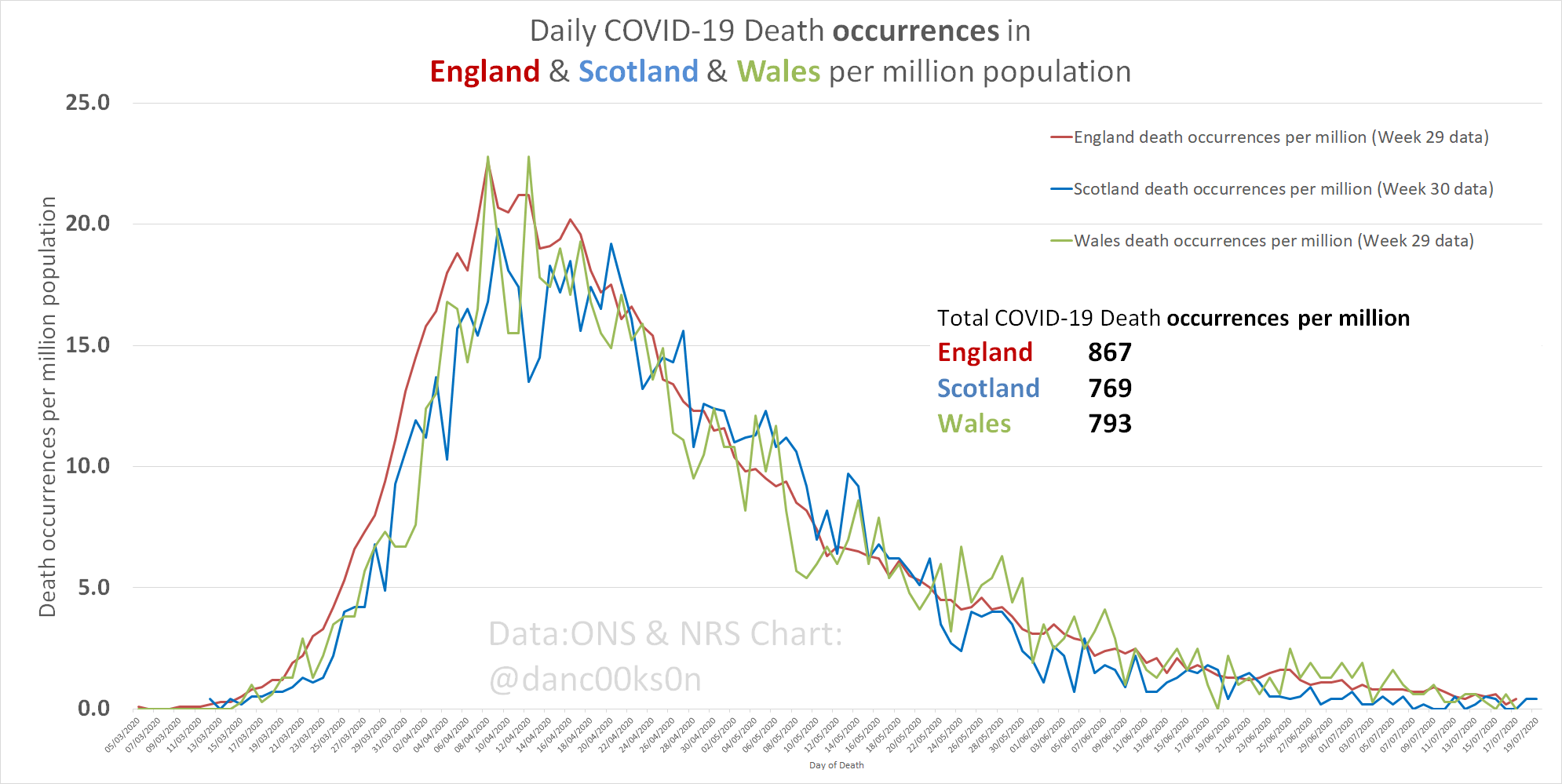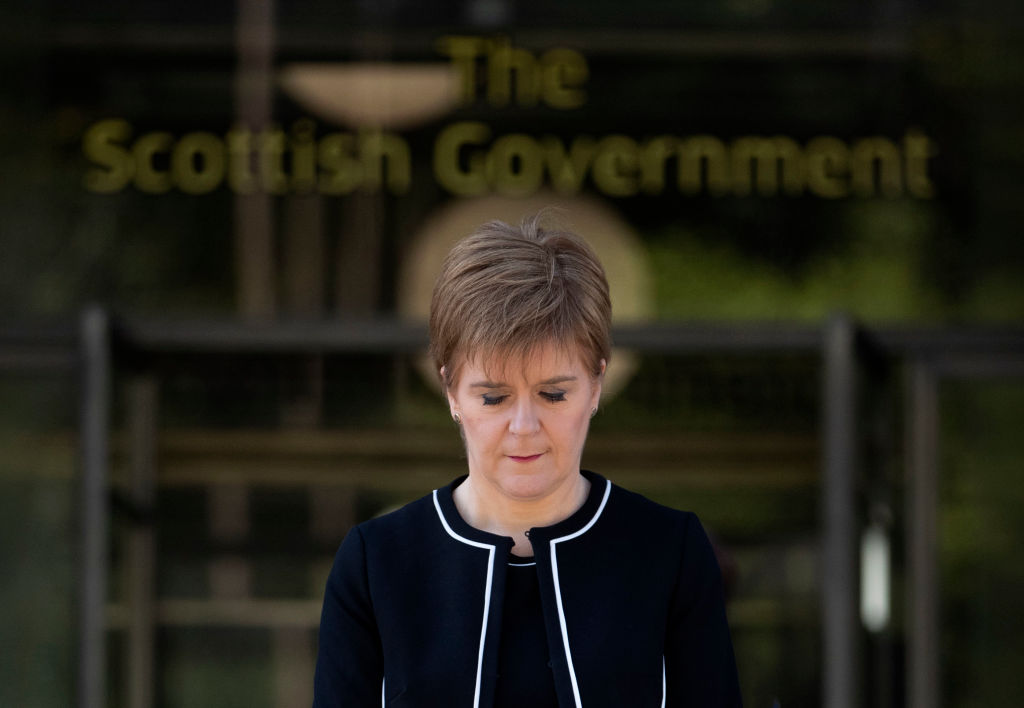What political opportunities Covid-19 has presented for Nicola Sturgeon. Day after day in recent weeks she has appeared at her press conference, presenting a picture of a Scotland where the disease has been all but eliminated – placed in contrast with England where, she says, the government is merely trying to contain the disease, and not very well at that. It is an image which, naturally, aides the cause of Scottish independence. To remind us of the game she is playing, she has several times pointedly raised, or failed to rule out, the threat of imposing quarantine on visitors from England.
But is the image of a Covid death-free Scotland fair? Interesting analysis by Sam Taylor lays bare the accuracy of Sturgeon’s – and other nationalists’ – claims. Most striking is Sturgeon’s figures claiming day after day of zero Covid deaths in Scotland. In the week ending 26 July, for example, the First Minister reported zero deaths for seven days in a row. Yet when the National Records of Scotland (NRS) reported its own figures it reported eight deaths that week. How come? Sturgeon’s daily figures, it transpires, exclude anyone who dies more than 28 days after being diagnosed with Covid-19, even if their death certificate confirms that the disease was a contributory factor in their death. So much for Scotland’s ‘zero deaths’. Even though Sturgeon once explained the differences in methodology, it is the fantasy of zero deaths that has dominated reporting on both sides of the border.
It is the fantasy of zero deaths that has dominated reporting
Scotland’s figures, not unnaturally, tend to get contrasted with those produced by Public Health England (PHE) – the faulty methodology behind which has been widely reported. While Sturgeon tries to exclude anyone who dies more than 28 days after they have tested positive from her figures, PHE counts anyone who has ever been diagnosed with the disease and dies – even if they made a quick recovery and later went on to die of a completely different cause – as a Covid death. It is little wonder that England is still notching up significant deaths. There are over 250,000 people in England who have been diagnosed with Covid-19 and who are still alive. Eventually, every one of them will die of something and, under current methodology, would eventually be recorded as a Covid-19 death, even if they succumb to old age in the year 2100.
If you use the same methodology to count deaths in both countries –counting anyone whose death certificate mentions Covid-19, regardless of when they died and whether they were ever formally diagnosed with the disease – there is very little difference between Scotland and England, nor indeed Wales. As the graph below shows, the epidemic began a little earlier in England than it did in the other two countries (most likely on account of the virus arriving in London first). But since mid-April, all three countries have followed pretty much the same trajectory.

Alternatively, you can compare England and Scotland by counting cumulative age-standardised mortality rates, which includes deaths from all causes in 2020, up until the end of May. Scotland emerges a little better than England in this analysis, but not by much – it comes out the second worst in Europe for deaths among the under 65s and third worst for deaths among the over 65s.
Finally, Taylor compares the performance of Scotland with the region of England which it most closely resembles demographically – the South West. In this analysis, Scotland comes off a little worse than the South West. If deaths have been a little higher in England than in Scotland since the beginning of the Covid crisis, it is largely on account of a higher death rate in England’s larger conurbations – conurbations which, apart from Greater Glasgow and Clydeside, Scotland simply doesn’t have.







Comments